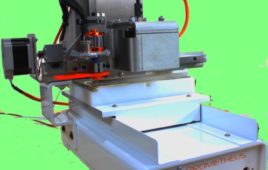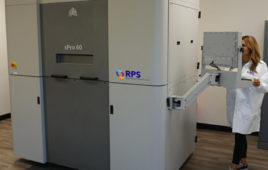Viewing the ocean depths has many practical applications. It helps ships avoid rocks, assists fisherman in locating their catch of the day, and allows us to better understand life at the bottom of the sea.
A team of researchers from Ocean University of China in Qingdao may have discovered a way to improve underwater visualizations by applying a mathematical approach called logical stochastic resonance to poor-quality underwater images.
The LSR algorithms improved their ability to visually detect objects, according to a paper published in the journal Optics Letters from the Optical Society.
LSR has been used before in theoretical research, but this study applies it to the practical issue of detecting objects in a highly scattering medium — like turbid seawater.
The basic idea is to mix broadband noise with a noise-degraded signal in a non-linear medium to enhance signal frequency components over the background noise. This constructive interference process can produce increased clarity from muddled noisy inputs.
This method is commonly used in noise and voltage fluctuations in non-linear electronic systems. In electronics, LSR can be used to resolve multiple dynamic systems and create a productive interplay that can tuned and modulated, resulting in a controlled current and more energy-efficient electronics.
In this study, the researchers adapted the approach the problem of visual noise that degrades the quality of images. In this case, the noise is due to suspended particles in the water that cause variations in the absorption and scattering of light, common of most water in nature and particularly seawater.
The LSR experiment required researchers to obtain a heavily degraded, noisy underwater image. They placed it in the LSR system as an input signal and then input additional noise to counter the inherent noise. The process improved object detection by indicating whether a pixel belonged to the object or the background.
“Our work is an interesting trial to apply LSR to process a degraded image produced by underwater imaging through a turbid medium,” said Nan Wang of the university’s College of Information Science & Engineering and lead author of the study.
“It is a helpful advance because inherent noise and nonlinearity cause difficulty in processing these images through conventional image processing methods.”
Filed Under: Rapid prototyping




